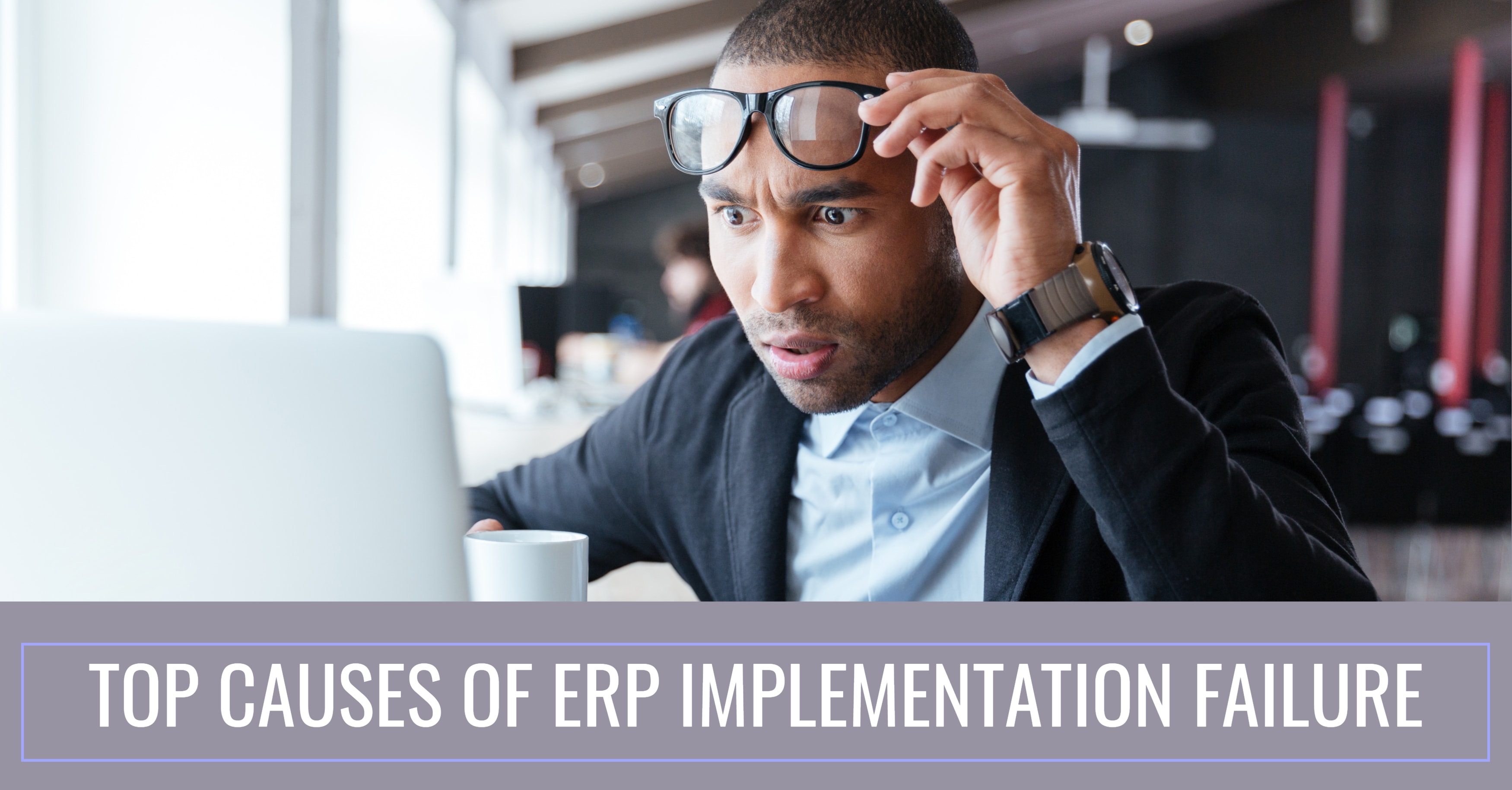Avoid These ERP Project Pitfalls
No business should avoid growth and improvement out of fear. However, that’s what many manufacturers and distributors do when they refuse to implement enterprise resource planning (ERP) software out of fear that the project will fall apart. Every major organizational change comes with the chance of failure. That’s why companies must buckle down and plan thoroughly to follow through with business initiatives. Once the project is over, they can enjoy exciting benefits that give them an edge over their competition.
Rather than fear ERP, tackle every step of the implementation by taking a proactive approach that will steer you clear of pitfalls. Read on to discover the common causes of ERP failure and learn the strategies that will help you avoid them.
Over Customization
One of the beauties of modern ERP is the capability to customize the software to fit with your specific business needs. But here’s the catch: When project teams go overboard on customizations, the result is an unwieldy system that exceeds your timeline and budget. Plus, the time required to execute multiple customizations often causes other critical processes—especially data migration and testing—to fall to the wayside, leading to major errors.
Before embarking on ERP customizations, prioritize your business goals and calculate if the process will generate positive ROI. If it doesn’t provide value to your users, then it’s simple: Don’t do it. For customizations that would improve business performance but aren’t immediately necessary, put them off to the side and revisit that project after go-live.
Another method of minimizing customizations is to seek out an ERP solution that includes most of your requirements out of the box or enables comprehensive configurations. Unlike customizations, configurations are changes that can be made to your software without touching the base code. Some software platforms empower companies to align the system to their business processes through simple configurations. For example, service-oriented architecture (SOA) is structured to permit businesses to make changes without modifying code and logic. An SOA-based ERP system, such as Epicor, easily adapts to ever-changing business needs.
Cost Overruns
Panorama’s 2018 ERP Report found that budget overruns remain one of the top causes of ERP implementation failure. Furthermore, they determined that three sources of excess costs included unrealistic budgets, unexpected technical and organizational issues and additional technology requirements. This report proves the importance of thoroughly planning for software projects.
As you plan your implementation, ensure that expectations are clear and realistic among your project team and stakeholders. When project goals aren’t in line, there’s a good chance that scope creep will set in as your team takes on tasks that fall outside your company’s priorities. Businesses should also consider potential disruptions as they plan their implementations, so they can strategize to prevent issues.
Additionally, many businesses set their budget without understanding the costs associated with their project. For example, on-premises implementations involve several costs associated with running hardware. Budgets for cloud systems need to account for subscription fees. Budgets should also include some wiggle room in case problems arise.
Poor Change Management
Several companies take a lax approach to organizational change management (OCM) or avoid the process altogether during their ERP projects. After all, once the ERP system is in place, it should offer superior tools that automate tasks and increase visibility—why wouldn’t users immediately take to the new software? But there’s a strong chance that users will struggle with the implementation, and they may continue to rely on old processes if an OCM strategy isn’t in place. It’s difficult to adjust to any change, and employees become agitated if their concerns are ignored during a substantial project.
That’s why it’s critical for project teams to establish a change management strategy from the beginning. This plan should include an array of methods and tasks designed to instill trust in the implementation, such as effective communication and user training. Early on, explain how an ERP instance will benefit each user throughout their daily tasks. In addition, identify their current pain points, and work to smooth those over in the project. Finally, train users on the specific features and modules they will need to optimize their processes. Keep the lines of communication open to address any of their concerns and help them become familiar with the interface.
Wrap Up
Still nervous about an ERP implementation? Software projects involve a lot of moving parts that no business should navigate alone. Instead, team up with an ERP specialist such as Datix. Datix is an Epicor Gold Partner with over 20 years of experience in providing ERP implementations, integrations, cloud hosting and more for manufacturers and distributors. We work closely with each client to ensure they have the right solution to address their pain points and take their businesses to new heights. From start to finish, our expert consultants provide tailored services and solutions that optimize business processes.
ERP implementation failure doesn’t have to happen to you. Contact Datix today to get on the path to software success!
{{cta(‘770c1544-d87d-4acb-9fc4-7a25e1385094′,’justifycenter’)}}


